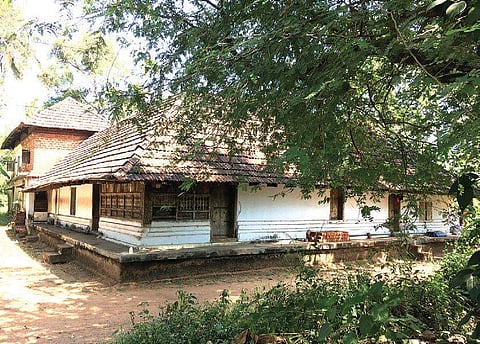

KALLETTUMKARA (THRISSUR) : When the country is all set to celebrate National Mathematics Day on Friday, Sangamagrama, a medieval town in present-day Kallettumkara in Thrissur, is on a mission to reclaim its pride of place in the world of maths. The town plans to do this by reviving the broken chain of the ‘guru sishya parampara’ of Sangamagrama Madhavan, a 15th century mathematician-astronomer, whose works laid the foundation of the Kerala school of mathematics, which flourished between AD 1300 and 1700.
Though Madhavan and his school of mathematics were known to the western world which, to a certain extent, recently acknowledged the contribution of his work on the infinite series, the house (Iringatappally Mana in Kallettunkara) where he is believed to have lived and the stones that he was reported to have used to study astronomy lie in an utter state of neglect.
Further, it’s a matter of shame that the state has failed to set up at least a memorial plaque at the place that gave birth to a legendary mathematician who had worked on the fundamentals of calculus around two centuries before Isaac Newton and his German counterpart Gottfried Wilhelm Leibniz, who were credited as its founders. The only surviving book of Madhava called ‘Venuaroham’ has evidence to prove the fact he had developed one of the critical strands of calculus more than two centuries before Newton and Leibniz lived, said A Vinod, secretary of Madhava Ganitha Kendram, a voluntary association working to revive his works.
Though the West has a tradition of neglecting the mathematical tradition that sprung outside Europe, the works of George Gheverghese Joseph, an emeritus professor at the University of Manchester, especially his book ‘The Crest of the Peacock: Non-European roots of Mathematics’, and a series of papers published by Charles Matthew Whish, a British civil servant in the Madras Establishment of the East India Company, in a journal called ‘Transactions of Asiatic Society of Great Britain and Ireland 1834’ showed that the works of Newton, Leibniz, and James Gregory were rediscoveries of the mathematics contributed by the Kerala school.
And now, the West has renamed certain results related to the trigonometric series, formerly known as the Newton, Gregory and Leibniz series, as the Madhava-Newton, Madhava-Gregory and the Madhava-Leibniz series, respectively.But Kerala is yet to recognise the math wizard. The state has not taken any major step to take the mathematical tradition set by Madhava and his disciples forward.
“The temple and the two stones laid at the courtyard of the temple to watch and study the stellar astronomy by Madhavan is now managed by the descendants of his family,” said S Sathish, working chairman of the reception committee of the Bharatiya Ganitha Sammelanam.
The Madhava Ganitha Kendram is now working on a project to make maths tourism a reality by connecting and protecting the heritage places of Madhava and his disciples, who lived in various places scattered between Periyar and Perar, also known as Bharatapuzha and Dakshina Ganga during AD 1300 and 1700, said Vinod.
This year’s Madhava Ganitha Purasakaram, instituted by the Madhava Ganitha Kendram in memory of the math wizard, will be presented to Prof K Rama Subramaniam of IIT Mumbai at the two-day Bharatiya Ganitha Sammelanam to be held on Friday and Saturday in Irinjalakuda.“We held a slew of programmes in the past five years to attract the youth into the realm of mathematics, which is staring at a bleak future of late due to a lack of patronage, despite stalwarts like Einstein lauding the efforts of Indians who taught the world how to count,” said Vinod.